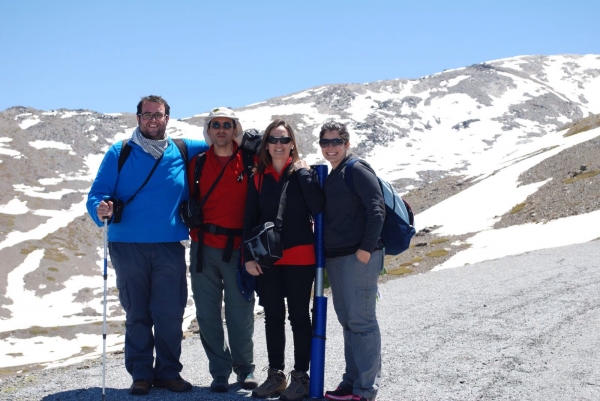When the Fluvial Dynamics and Hydrology research group at the University of Cordoba, led by Professor María José Polo, got to the Sierra Nevada in 2002, there were no weather stations above the height of 1,200 meters, meaning that there was a great deal of uncertainty regarding the measurements of everything that happened in the field of meteorology and hydrology between 1,200 meters and the Mulhacen Peak at 3,479 meters.
Making use of the Poqueira weather station, at 2,500 meters, the first complete weather station especially designed for snow was set up, filling in the gaps for instrumentation and scientific needs that are essential in order to understand snow dynamics in high mountain areas of the Mediterranean. This is how the Guadalfeo Monitoring Network came to be, a network of weather stations up high in the mountains that have provided monitoring data over the course of 14 years. Now these data have been made available for the entire research community via the recent publication in the open access journal Earth System Science Data.
The experimental area of choice was of great scientific interest as it is a semiarid, very steep, high mountain area, representative of snow cover with highly variable dynamics and topography. Framed in the Guadalfeo river basin, this area includes the main snow zone and all of the watershed down to the Rules reservoir, which is a hydrological closing point as it registers daily water intakes.
The first station, in the Poqueira area, is the pilot zone for researching these processes and holds a complete set of scientific instruments (measuring device for snow water equivalence, fusion patches) and allows for carrying out very detailed studies to characterize the physics of snow accumulation and ablation. At the next level, at the headwaters, the complete meteorological network is located, including several additional stations where photographs are continuously taken. These photos provide detailed images of different areas which can calibrate and validate satellite data. Lastly, at the basin level, the water balance was able to close with data from the Rules reservoir. Thus, based on the study being performed at the first station, a study zone of hydrology in high mountains on multiple levels is obtained. This allows for validating the data obtained on a small scale and extrapolating those results on a larger scale.
Starting a monitoring methodology that uses digital photographs to supplement weather information with surface variables that the camera captures lets researchers validate these data and get even more information. Thanks to time lapses that were recorded, we can see if there is fog, if it is specifically raining or snowing at any given moment, how the snow melts around bushes that act as little heaters and a lot of data that could not be accurately gathered without those detailed images.
Due to including the photographs, snow distribution maps have been discovered which are now accessible to the whole scientific community along with the meteorological data gathered at the stations, facilitating work not only in the fields of hydrology and meteorology but also in those of ecology and botany.
Meanwhile, the Guadalfeo Monitoring Network continues working and growing thanks to the research group that has implemented new solutions for scientific gaps that are detected each year.
Polo, M. J., Herrero, J., Pimentel, R. and Pérez-Palazón, M. J.The Guadalfeo Monitoring Network (Sierra Nevada, Spain): 14 years of measurements to understand the complexity of snow dynamics in semiarid regions. Earth System Science Datavol. 11(2019) pag393 – 407 DOI=10.5194/essd-11-393-2019


